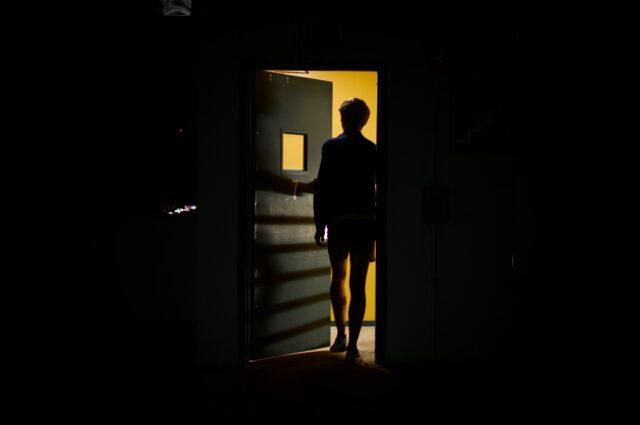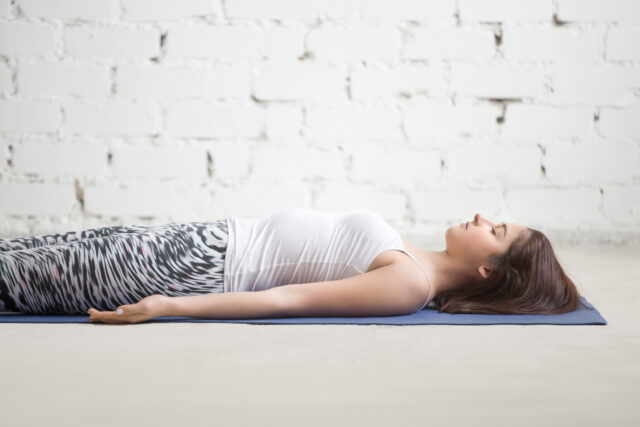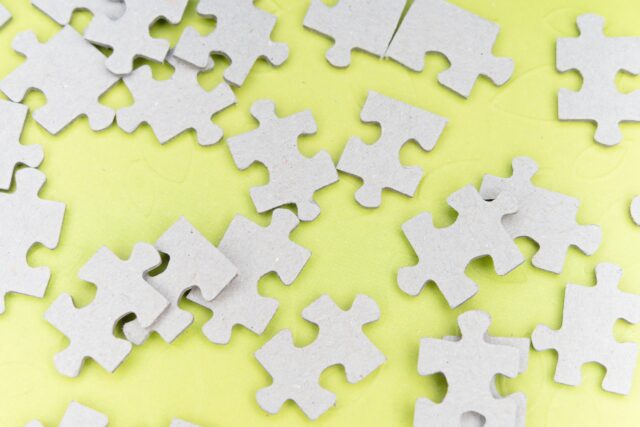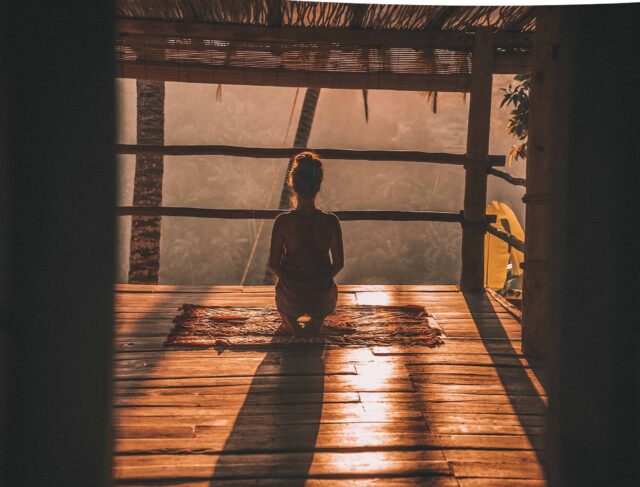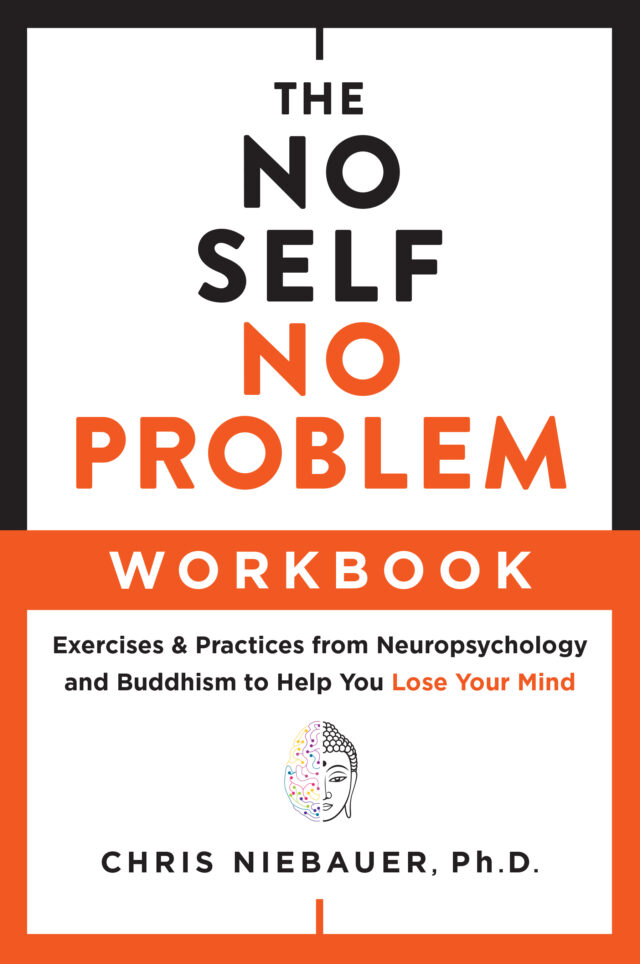Is the Mind an Escape Room?
Dear readers,
Sometimes—many times—my work at Hierophant just makes me grin.
Reading Professor Chris Niebauer’s brand new book last weekend was one of those times. In The No Self, No Problem Workbook: Exercises and Practices from Neuropsychology and Buddhism to Help You Lose Your Mind, he writes, “What if life is an escape room? This is a game where a group of people pay to be locked into a room, find clues, and solve puzzles in order to get out. Maybe consciousness locks itself in a room of hidden clues and then goes on the adventure of finding its way out.”
For those unfamiliar with the tenets of Buddhism, the concept of anatta, or “no-self” describes the idea that the self is an illusion from which our mental suffering stems. In his previous book, No Self, No Problem: How Neuropsychology is Catching Up to Buddhism, Professor Niebauer applies his expertise in neuropsychology to the concept of anatta to demonstrate how neuroscience supports the Buddhist idea of a fictional self. But how are we supposed to escape our thinking minds?
The No Self, No Problem Workbook provides the tools to do exactly that: outwit the “escape room” of the limited, imaginary self—dominated by the left brain—and experience the weird, wonderful, and expansive realm of “no-self,” accessed through the right.
Not only do I love escape rooms, but I have a soft spot for books that jolt me out of my ordinary state of consciousness and do something to my brain. The No Self, No Problem Workbook is exactly that kind of book!
After spending a pleasant afternoon working through the thought experiments, riddles, and hands-on practices designed to quiet the thinking mind and induce this “no self” experience, I truly felt I had entered an altered state of consciousness. Suddenly, I could feel the workings of my brain in a way that had never been quite so clear before. Even as I write this, several days later, I feel a renewed sense of excitement about un-knotting this magical, elusive, and endlessly confounding illusion called the self, and discovering what lies beyond it.
I first stumbled upon the power of “no self” when I was in the midst of a health crisis in my late twenties. I’d been suffering from severe, chronic insomnia for several years. This maddening condition had proved resistant to just about everything—yoga, meditation, herbs, therapy, acupuncture, Western pharmacology. My quality of life was very poor. Every day was a struggle, with no relief in sight. At the peak of this suffering, I found myself Googling things like at what point do you die from insomnia?, and researching whether euthanasia was legal in my state.
I was well aware that these thoughts of death were alarming. But what could I do? I’d consulted every doctor and alternative practitioner under the sun, and nobody had been able to help me. If this painful and debilitating condition was truly incurable, it seemed to me that death should not be ruled out as a viable alternative.
After sitting with these thoughts for a week or two, I had a brilliant idea. If I was considering death as a possibility, why not practice being dead? I could try death on for size, right here, right now, by lying on the floor and pretending I didn’t exist. I wouldn’t have to sign up for the real version until I was sure that I liked it.
Intrigued by this idea, I lay on the floor in savasana—otherwise known as corpse pose, in yoga—and stuck an eye mask over my eyes. My head soon began to fill up with its usual weary thoughts—All this traffic on our street is driving me crazy. I’ll never finish the novel I’m working on—but now there was a difference. For every thought that came up, I now had the perfect response: So what? I’m dead!
It thrilled me to be “dead” in this way. Suddenly, I had no problems. I no longer had to fix anything. The traffic on my street had nothing to do with me. My unfinished novel would remain so, and that was not my problem. My suffering lifted almost instantly, and I experienced a mental lightness I hadn’t felt in years.
So what? I’m dead! became my mantra, and savasana my go-to yoga pose. Whenever I felt myself becoming overwhelmed by real or imaginary problems, all I had to do was “die” for a few minutes and my relationship to those problems would right itself. Needless to say, my thoughts of actual death dissipated completely—and not long afterwards, my insomnia cleared up too.
I think Chris Niebauer would say that in teaching myself to “die,” I’d cracked an important puzzle in the escape room. After all, if I was dead, I had no problems to solve—and if I had no problems to solve, there was no longer anything for my left brain to do. With my left brain temporarily stunned into silence, my right brain got some breathing room. The contracted, suffering “self” who had to deal with traffic and write a novel flickered off like a hologram, leaving behind…what, exactly? Bare existence. Light and shadow. Sound, vibration, color, scent.
Suddenly, it didn’t matter if I achieved great things. It didn’t even matter if I recovered from insomnia! As Niebauer writes in his first book, No Self, No Problem, once you become aware of the left brain’s talent for inventing problems out of thin air, “You may even stop trying so hard to change certain things in your life, or to become this or that in the future, because you begin to notice that the problems you are trying to overcome are mostly creations of the left-brain interpreter and you see how once they are overcome the left-brain interpreter will simply create new ones.”
In other words, the left brain’s full-time job is to endlessly produce more problems for the imaginary "self" to shoulder. If you’re tired of having problems, get in touch with your right brain—and ditch your self.
Ten years after my insomnia crisis, I still like to practice being dead. Lately, this takes the form of selecting a random moment in the day and imagining in as much detail as possible what that moment would be like if I wasn’t there.
For example, if I’m at home in my cabin, I’ll listen carefully to the sound of the frogs, the creaking bamboo, and the rushing stream, and imagine what these things sound like when I’m not there to hear them. I imagine the cabin exactly as it is, but minus me: still, empty, a couple of dry leaves blowing across the floor. I see the stars, the dark shape of the hills, and the tools leaning against the wall of the shed, and imagine that these things are simply here, without anyone looking at them.
This practice brings me a deep sense of peace. I like to know that this place has a life without me, that this world has a life without me—indeed, that I have a life without me, or at least without the jumble of thoughts, plans, and opinions my left brain would have me believe is “me.” As I sit in my cabin, imagining that I’m not there at all, I become more present than I am when I am there. And if that’s not a riddle worth pondering, I’m not sure what is.
One of the best pieces of advice I’ve ever gotten was from a young woman who advised me to “ride loose in the saddle” if I wanted to survive as an off-grid homesteader. She was referring to a willingness to do any job rather than clinging to specific career plans, but I’ve found that this advice applies splendidly to just about any aspect of life. When you ride loose in the saddle of jobs, you find yourself learning skills and making connections you never would have imagined possible. (Rare plant propagation? Sure! Translating medieval French poetry? Okay!) And when you ride loose in the saddle of the self, you understand that the self is just for fun. As Niebauer would put it, the self is what pure consciousness dreams up to entertain itself. We’re not supposed to rigidly defend it, we’re supposed to play with it—wholeheartedly, and with great delight.
When you embrace this attitude, life becomes a lot more fun. Opportunities arise where before you could see only dead ends. If your “self” is just a suggestion, you really can write your own ticket in terms of jobs, relationships, and just about everything else. If your “self” can be anything, it is threatened by nothing. You can enjoy the escape room, knowing it’s just a game.
I will always treasure the moments in my life where I’ve gotten a glimpse of no self—that bright, expansive, infinitely peaceful state. Indeed, someday, I hope to make it my permanent address. As Niebauer writes, “It is possible to make no self your home, and self a place you sometimes visit.”
May we all “lose our minds” in 2023, and treat our selves like the fun, well-meaning, charming illusions they really are.
Sincerely,
Hilary Smith
Senior Editor, Hierophant Publishing
Click here to read Hilary's previous essay, "Pruning Trees, Words, & Life."
Ready to tackle the escape room of the mind yourself? Check out The No Self, No Problem Workbook.
In this groundbreaking workbook, Professor Chris Niebauer takes a deep dive into the incredible link between Eastern philosophy and recent findings in neuropsychology, which is now confirming a fundamental tenet of Buddhism: anatta, or the doctrine of “no self.”
The exercises and practices in this book are designed to help you recognize and disidentify with the fictional self created by your left-brain interpreter. Learn how to become more present, find inner peace, and see the world through the eyes of what Niebauer calls “clear consciousness.”
